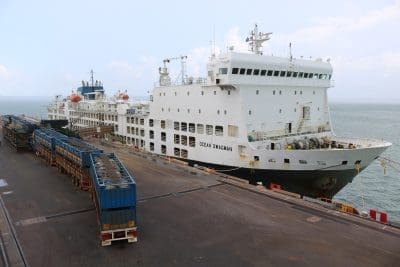Livestock exporters are calling for a review of the Department of Agriculture’s regulatory procedures, after releasing figures showing that the cost of regulation on livestock export businesses has nearly tripled in just five years.
That is despite live export numbers having almost halved from Australia over the same period.
 Industry representatives say they fully support robust regulation of their industry and the principle of regulatory cost recovery by Government.
Industry representatives say they fully support robust regulation of their industry and the principle of regulatory cost recovery by Government.
However, they say that if industry is to pay for the cost of regulation, it is “only fair and reasonable” that the regulating body operates transparently regarding the costs it is seeking to recover, and be accountable to delivering efficient regulation.
The comments are contained in a joint submission by the State representative bodies for the WA, NT and Qld livestock export industries lodged in response to the Department of Agriculture’s latest Live Animal Exports Cost Recovery Implementation Statement.
The exporters say that in the 2018 financial year, the Department’s estimated cost to operate the regulatory function was $8.526 million.
In the 2022 financial year, that number had risen to $21.3 million.
Departmental officials have previously indicated that livestock export sector regulation accounts for 70 percent of the overall cost. On that basis livestock exporters say the cost for their industry has risen from $5.96m in 2018 to $14.9m in 2022.
“That is, the cost to operate the regulatory function increased by almost threefold (ie almost 300 percent) over a period of just four years,” the submission states.
Additionally, it says, the cost of regulation per export unit has increased by more than four times in four years, from $4.86 per unit in 2018 to $21.70 per unit in 2022.
It also adds that the cost of regulation for livestock exports is “significantly higher” than other agricultural export sectors including meat, horticulture and dairy products.
“While the industry accepts that regulating the export of livestock does involve more regulatory complexity than many other export industries, the relative cost of regulating live export compared to other agricultural industries seems extraordinary.”
The submission says the industry has asked the Department to clearly articulate and provide a step analysis justifying the increase and to help industry to “understand how the cost has increased by so much”.
It said responses received from the Department to date had not provided clear and detailed justifications.
It also expresses concern that the structure of the regulating body “does not appear to be compatible with the nature of the industry”, which involves significant variability in volumes from year to year.
The industry says only “effective, efficient, and accountable (regarding utility and cost) regulation” will ultimately safeguard the industry’s future and the many regional, agricultural as well as overseas stakeholders it supports.
“The massive increase in the cost of livestock animal regulation in absolute, relative, and comparative terms demands a thorough and transparent review of the effectiveness and efficiency of prevailing regulation.
“The tens of millions of dollars of government investment and committed investment into technology and process improvement to drive regulation efficiency further supports a robust review of the effectiveness and efficiency of regulation.
“Industry believes this should be a prerequisite before any further per unit increases (noting that there have already been very significant increases since F2018).”
Exporters have also highlighted the point that the burden of increased regulatory costs has fallen directly on exporters and their commercial operating viability.
They argue the changes have not added material burden to the Department as the administrator of the regulation. Examples included the decision to restrict sheep exports to eight months of the year which have had negative impacts on exporter viability and supply consistency, which did not place additional burden on the regulator.
“Significantly, much of the burden of key regulatory changes (e.g., reduced densities, higher fodder reserves, season-based prohibition, longer holding period) has fallen directly on the industry through significant adverse commercial outcomes, but do not represent an ongoing cost impact on the function of regulation itself.”
The Department of Agriculture, Fisheries and Forestry has been contacted for comment on regulatory costs and its response will be published when received.
